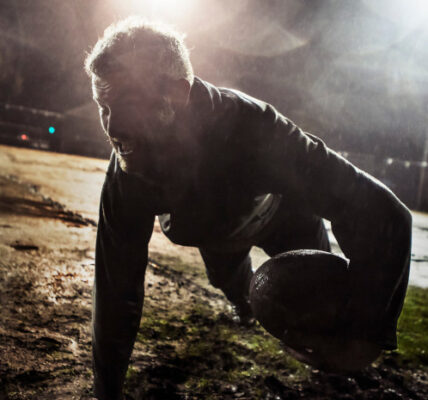It starts with a handshake and ends with a symbol. A sweaty, muddied jersey tossed from one player to another like it’s nothing. But it’s not nothing. Not anymore. In South African rugby, and across the broader world of competitive sport, that simple jersey swap has grown into something else entirely. A ritual, yes. A gesture of respect, sure. But now? It’s a new kind of currency. One that trades in loyalty, identity, and memory.
This isn’t just about Springboks trading with All Blacks at the end of a test. This is schoolboys in the Eastern Cape bartering jerseys with their rivals, not for the sake of respect, but because that other jersey, blue, gold, red, whatever, means something. It’s a piece of the narrative. A badge of honour. A post-match trophy that says, “I was there. I played against them. I mattered.”
And it’s not just happening on the pitch. Go to any vintage market in Cape Town or Johannesburg and you’ll find a wall of old rugby jerseys, pinned up like war medals. Border Bulldogs from the ‘90s. Western Province from the Currie Cup days when it still felt like religion. Some are torn. Some are signed. Some still smell faintly of Deep Heat and disappointment. And people buy them. Not because they support the team, but because they want the story.
Welcome to the jersey swap economy. It’s not just a trend. It’s a culture shift. A moment where loyalty stopped being this locked-down, one-team-for-life affair, and started becoming something fluid. Portable. Strategic, even. We see it on social media, fans wearing a Stormers jersey one week, a Sharks top the next, depending on who’s got the momentum or the meme.
For older generations, this feels like heresy. “Back in my day,” they say, “you bled for one jersey, one team, one cause.” And fair enough. That era built South African rugby’s identity. But the new generation isn’t betraying that legacy, they’re remixing it. Playing with it. Wearing it differently. Because loyalty, for them, is a conversation, not a contract.
And that conversation is loudest on Instagram. Scroll through reels of post-match celebrations and you’ll find players and fans documenting their swaps like streetwear hauls. That Bulls jersey you wore to Loftus? It’s now framed next to a Cheetahs shirt signed by a rival player. Not because you turned on your team, but because you collected the moment. That’s what jerseys are now. Not just fabric and thread, but emotional time capsules. Badges of presence. Of proximity.
For players, the swap is even more layered. A jersey can mean “we’re equals.” It can also mean “we battled.” Sometimes, it’s a peace offering. Other times, it’s a flex. And then, occasionally, it’s a bribe, especially at school and club level. That tighthead prop from Paarl Gym? He’s not giving away his first-team top unless your side made him sweat. Unless you earned it.
There’s also a dark side to the economy. The way old jerseys are resold online at absurd prices. The way fakes are flooding markets from China, stripping the meaning out of the tradition. Or worse, the way players’ kits, gifted in trust, end up flipped for quick cash. That’s when loyalty stops being currency and starts being collateral. And it stings.
 Still, the symbolism lives on. A jersey is earned. Even if you didn’t win. Even if you got smoked 50–3. If the opposing team sees your fight, your grit, your refusal to roll over, you might just get offered that swap. And when you pull it over your head, still soaked in someone else’s blood, sweat, and story, it’s no longer their jersey. It’s yours now. A symbol that you belonged in the same arena, even just for 80 minutes.
Still, the symbolism lives on. A jersey is earned. Even if you didn’t win. Even if you got smoked 50–3. If the opposing team sees your fight, your grit, your refusal to roll over, you might just get offered that swap. And when you pull it over your head, still soaked in someone else’s blood, sweat, and story, it’s no longer their jersey. It’s yours now. A symbol that you belonged in the same arena, even just for 80 minutes.
Some take it further. There are players with closets full of them. Jerseys from every province, every touring team, every international encounter they managed to survive. They don’t display them in glass cases. They wear them. Mix and match. A Free State top with old Bok socks. Because they know what the rest of the world is catching on to, loyalty doesn’t always look like one team. Sometimes it looks like legacy.
And for fans?
The swap economy has become a kind of code. A visual language. You see someone in a 2007 World Cup Bok jersey with a rip near the collar and a faded Habana number on the back, you know exactly what that person’s about. That jersey says more than any Twitter bio ever could. It says, “I remember.” It says, “I was shaped by this.”
You see someone in a brand-new Pumas shirt at Ellis Park? You don’t question their loyalty, you ask them why. And the answer might surprise you. Maybe it’s their cousin’s team. Maybe they lost a bet. Maybe they just love the colour. Whatever it is, that jersey has become a vehicle for story.
And stories are what this game is built on. In the end, rugby’s not about stats or trophies or highlight reels. It’s about the quiet moments, the silent handshake in the tunnel. The shared water bottle between rivals. The jersey passed from chest to chest, drenched and heavy and full of meaning.
So when you see someone in a jersey that doesn’t match their accent, don’t assume it’s fake. Ask them what game it came from. Ask them what it cost. And you might hear a story about heartbreak, about triumph, about identity, about love.
Because in South African rugby, the jersey isn’t just what you wear.
It’s what you leave behind.
It’s what you carry forward.
And sometimes, it’s the only proof that you were really there.




